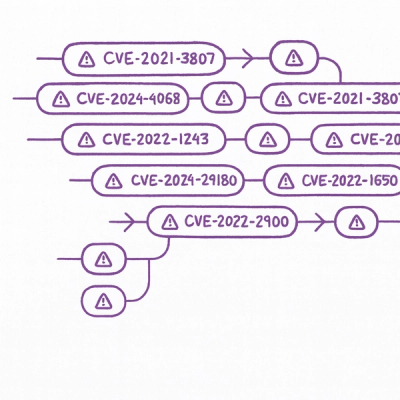
Security News
New Website “Is It Really FOSS?” Tracks Transparency in Open Source Distribution Models
A new site reviews software projects to reveal if they’re truly FOSS, making complex licensing and distribution models easy to understand.
h1. Jekyll
Jekyll is a simple, blog aware, static site generator. It takes a template directory (representing the raw form of a website), runs it through Textile or Markdown and Liquid converters, and spits out a complete, static website suitable for serving with Apache or your favorite web server. Visit "http://tom.preston-werner.com":http://tom.preston-werner.com to see an example of a Jekyll generated blog.
To understand how this all works, open up my "TPW":http://github.com/mojombo/tpw repo in a new browser window. I'll be referencing the code there.
Take a look at "index.html":http://github.com/mojombo/tpw/tree/master/index.html. This file represents the homepage of the site. At the top of the file is a chunk of YAML that contains metadata about the file. This data tells Jekyll what layout to give the file, what the page's title should be, etc. In this case, I specify that the "default" template should be used. You can find the layout files in the "_layouts":http://github.com/mojombo/tpw/tree/master/_layouts directory. If you open "default.html":http://github.com/mojombo/tpw/tree/master/_layouts/default.html you can see that the homepage is constructed by wrapping index.html with this layout.
You'll also notice Liquid templating code in these files.
"Liquid":http://www.liquidmarkup.org/ is a simple, extensible templating
language that makes it easy to embed data in your templates. For my homepage I
wanted to have a list of all my blog posts. Jekyll hands me a Hash containing
various data about my site. A reverse chronological list of all my blog posts
can be found in site.posts. Each post, in turn, contains various
fields such as title and date.
Jekyll gets the list of blog posts by parsing the files in any
"_posts":http://github.com/mojombo/tpw/tree/master/_posts directory found in
subdirectories below the root.
Each post's filename contains the publishing date and slug (what shows up in the
URL) that the final HTML file should have. Open up the file corresponding to a
blog post:
"2008-11-17-blogging-like-a-hacker.textile":http://github.com/mojombo/tpw/tree/master/_posts/2008-11-17-blogging-like-a-hacker.textile.
GitHub renders textile files by default, so to better understand the file,
click on the
"raw":http://github.com/mojombo/tpw/tree/master/_posts/2008-11-17-blogging-like-a-hacker.textile?raw=true
view to see the original file. Here I've specified the post
layout. If you look at that file you'll see an example of a nested layout.
Layouts can contain other layouts allowing you a great deal of flexibility in
how pages are assembled. In my case I use a nested layout in order to show
related posts for each blog entry. The YAML also specifies the post's title
which is then embedded in the post's body via Liquid.
Posts are handled in a special way by Jekyll. The date you specify in the
filename is used to construct the URL in the generated site. The example post,
for instance, ends up at
http://tom.preston-werner.com/2008/11/17/blogging-like-a-hacker.html.
Categories for posts are derived from the directory structure the posts were found within. A post that appears in the directory foo/bar/_posts is placed in the categories 'foo' and 'bar'. By selecting posts from particular categories in your Liquid templates, you will be able to host multiple blogs within a site.
Files that do not reside in directories prefixed with an underscore are mirrored into a corresponding directory structure in the generated site. If a file does not have a YAML preface, it is not run through the Liquid interpreter. Binary files are copied over unmodified.
Jekyll is still a very young project. I've only developed the exact functionality that I've needed. As time goes on I'd like to see the project mature and support additional features. If you end up using Jekyll for your own blog, drop me a line and let me know what you'd like to see in future versions. Better yet, fork the project over at GitHub and hack in the features yourself!
h2. Example Proto-Site
My own personal site/blog is generated with Jekyll.
The proto-site repo ("http://github.com/mojombo/tpw":http://github.com/mojombo/tpw) is converted into the actual site ("http://tom.preston-werner.com/":http://tom.preston-werner.com)
h2. Install
The best way to install Jekyll is via RubyGems:
$ sudo gem install mojombo-jekyll -s http://gems.github.com/
Jekyll requires the gems directory_watcher, liquid, open4,
and maruku (for markdown support). These are automatically
installed by the gem install command.
Maruku comes with optional support for LaTeX to PNG rendering via
"blahtex":http://gva.noekeon.org/blahtexml/ (Version 0.6) which must be in
your $PATH along with dvips.
(NOTE: the version of maruku I am using is remi-maruku on GitHub as it
does not assume a fixed location for dvips.)
h2. Run
$ cd /path/to/proto/site $ jekyll
This will generate the site and place it in /path/to/proto/site/_site. If you'd like the generated site placed somewhere else:
$ jekyll /path/to/place/generated/site
And if you don't want to be in the proto site root to run Jekyll:
$ jekyll /path/to/proto/site /path/to/place/generated/site
h2. Run Options
There is an autobuild feature that will regenerate your site if any of the files change. The autobuild feature can be used on any of the invocations:
$ jekyll --auto
By default, the "related posts" functionality will produce crappy results. In order to get high quality results with a true LSI algorithm, you must enable it (it may take some time to run if you have many posts):
$ jekyll --lsi
For static code highlighting, you can install Pygments (see below) and then use that to make your code blocks look pretty. To activate Pygments support during the conversion:
$ jekyll --pygments
By default, Jekyll uses "Maruku":http://maruku.rubyforge.org (pure Ruby) for Markdown support. If you'd like to use RDiscount (faster, but requires compilation), you must install it (gem install rdiscount) and then you can have it used instead:
$ jekyll --rdiscount
When previewing complex sites locally, simply opening the site in a web browser (using file://) can cause problems with links that are relative to the site root (e.g., "/stylesheets/style.css"). To get around this, Jekyll can launch a simple WEBrick server (works well in conjunction with --auto). Default port is 4000:
$ jekyll --server [PORT]
h2. Data
Jekyll traverses your site looking for files to process. Any files with YAML front matter (see below) are subject to processing. For each of these files, Jekyll makes a variety of data available to the pages via the Liquid templating system. The following is a reference of the available data.
h3. Global
site Sitewide information.
page For Posts, this is the union of the data in the YAML front matter and the computed data (such as URL and date). For regular pages, this is just the YAML front matter.
content In layout files, this contains the content of the subview(s). In Posts or pages, this is undefined.
h3. Site
site.time The current Time (when you run the jekyll command).
site.posts A reverse chronological list of all Posts.
site.related_posts If the page being processed is a Post, this contains a list of up to ten related Posts. By default, these are low quality but fast to compute. For high quality but slow to compute results, run the jekyll command with the --lsi (latent semantic indexing) option.
site.categories.CATEGORY The list of all posts in category CATEGORY.
h3. Post
post.title The title of the Post.
post.url The URL of the Post without the domain. e.g. /2008/12/14/my-post.html
post.date The Date assigned to the Post.
post.id An identifier unique to the Post (useful in RSS feeds). e.g. /2008/12/14/my-post
post.content The content of the Post.
post.categories The list of categories to which this post belongs.
h2. YAML Front Matter
Any files that contain a YAML front matter block will be processed by Jekyll as special files. The front matter must be the first thing in the file and takes the form of:
--- layout: post title: Blogging Like a Hacker ---
Between the triple-dashed lines, you can set predefined variables (see below for a reference) or custom data of your own.
h3. Predefined Global Variables
layout
If set, this specifies the layout file to use. Use the layout file
name without file extension. Layout files must be placed in the
_layouts directory.
h3. Predefined Post Variables
permalink If you need your processed URLs to be something other than the default /year/month/day/title.html then you can set this variable and it will be used as the final URL.
h3. Custom Variables
Any variables in the front matter that are not predefined are mixed into the
data that is sent to the Liquid templating engine during the conversion. For
instance, if you set a title, you can use that in your layout to
set the page title:
{{ page.title }}
h2. Filters, Tags, and Blocks
In addition to the built-in Liquid filters, tags, and blocks, Jekyll provides some additional items that you can use in your site.
h3. Date to XML Schema (Filter)
Convert a Time into XML Schema format.
{{ site.time | date_to_xmlschema }}
becomes
2008-11-17T13:07:54-08:00
h3. XML Escape (Filter)
Escape some text for use in XML.
{{ post.content | xml_escape }}
h3. Number of Words (Filter)
Count the number of words in some text.
{{ post.content | number_of_words }}
becomes
1337
h3. Include (Tag)
If you have small page fragments that you wish to include in multiple places on your site, you can use the include tag.
{% include sig.textile %}
Jekyll expects all include files to be placed in an _includes
directory at the root of your source dir. So this will embed the contents of
/path/to/proto/site/_includes/sig.textile into the calling file.
h3. Code Highlighting (Block)
Jekyll has built in support for syntax highlighting of over "100 languages":http://pygments.org/languages/ via "Pygments":http://pygments.org/. In order to take advantage of this you'll need to have Pygments installed, and the pygmentize binary must be in your path. When you run Jekyll, make sure you run it with Pygments support:
$ jekyll --pygments
To denote a code block that should be highlighted:
{% highlight ruby %}
def foo
puts 'foo'
end
{% endhighlight %}
The argument to highlight is the language identifier. To find the
appropriate identifier to use for your favorite language, look for the "short
name" on the "Lexers":http://pygments.org/docs/lexers/ page.
In order for the highlighting to show up, you'll need to include a highlighting stylesheet. For an example stylesheet you can look at "syntax.css":http://github.com/mojombo/tpw/tree/master/css/syntax.css. These are the same styles as used by GitHub and you are free to use them for your own site.
h2. Categories
Posts are placed into categories based on the directory structure they are found within (see above for an example). The categories can be accessed from within a Liquid template as follows:
{% for post in site.categories.foo %}
This would list all the posts in the category 'foo' by date and title.
The posts within each category are sorted in reverse chronological order.
h2. Contribute
If you'd like to hack on Jekyll, grab the source from GitHub. To get all of the dependencies, install the gem first.
$ git clone git://github.com/mojombo/jekyll
The best way to get your changes merged back into core is as follows:
h2. License
(The MIT License)
Copyright (c) 2008 Tom Preston-Werner
Permission is hereby granted, free of charge, to any person obtaining a copy of this software and associated documentation files (the 'Software'), to deal in the Software without restriction, including without limitation the rights to use, copy, modify, merge, publish, distribute, sublicense, and/or sell copies of the Software, and to permit persons to whom the Software is furnished to do so, subject to the following conditions:
The above copyright notice and this permission notice shall be included in all copies or substantial portions of the Software.
THE SOFTWARE IS PROVIDED 'AS IS', WITHOUT WARRANTY OF ANY KIND, EXPRESS OR IMPLIED, INCLUDING BUT NOT LIMITED TO THE WARRANTIES OF MERCHANTABILITY, FITNESS FOR A PARTICULAR PURPOSE AND NONINFRINGEMENT. IN NO EVENT SHALL THE AUTHORS OR COPYRIGHT HOLDERS BE LIABLE FOR ANY CLAIM, DAMAGES OR OTHER LIABILITY, WHETHER IN AN ACTION OF CONTRACT, TORT OR OTHERWISE, ARISING FROM, OUT OF OR IN CONNECTION WITH THE SOFTWARE OR THE USE OR OTHER DEALINGS IN THE SOFTWARE.
FAQs
Unknown package
We found that ddemaree-jekyll demonstrated a not healthy version release cadence and project activity because the last version was released a year ago. It has 1 open source maintainer collaborating on the project.
Did you know?

Socket for GitHub automatically highlights issues in each pull request and monitors the health of all your open source dependencies. Discover the contents of your packages and block harmful activity before you install or update your dependencies.

Security News
A new site reviews software projects to reveal if they’re truly FOSS, making complex licensing and distribution models easy to understand.

Security News
Astral unveils pyx, a Python-native package registry in beta, designed to speed installs, enhance security, and integrate deeply with uv.

Security News
The Latio podcast explores how static and runtime reachability help teams prioritize exploitable vulnerabilities and streamline AppSec workflows.